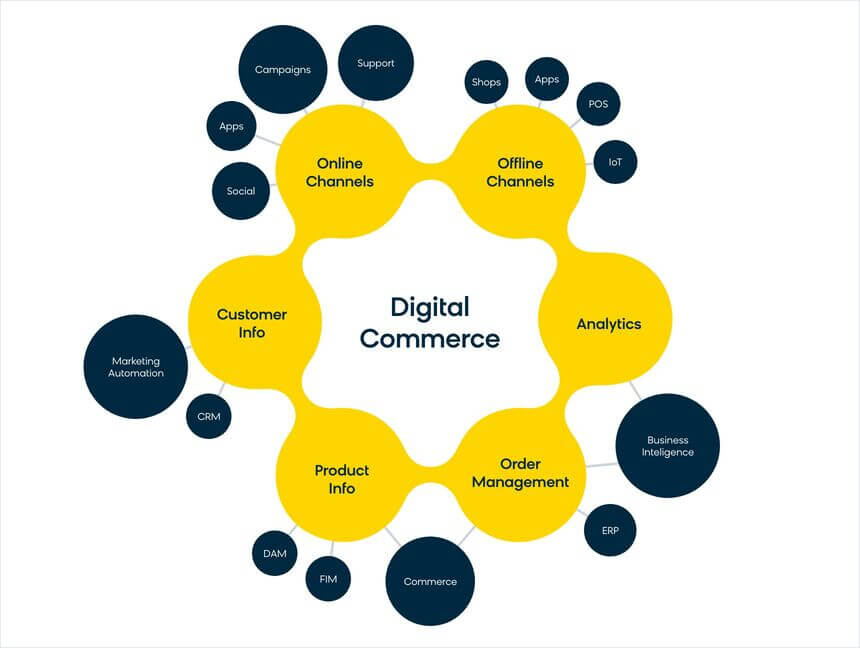Digital commerce or e-commerce
The purchasing and selling of goods and services through electronic transactions carried out over the internet or other digital channels is referred to as digital commerce, or e-commerce. It has completely changed how consumers and businesses conduct business by providing convenience, accessibility, and a greater range of goods and services. Digital commerce refers to a range of online exchanges, such as consumer-to-consumer (C2C), business-to-business (B2B), and business-to-consumer (B2C).

Key aspects and trends shaping digital commerce
- Online Marketplaces: Online marketplaces like Amazon, eBay, and Alibaba provide platforms where businesses and individuals can sell products to a vast audience. These platforms offer visibility, infrastructure, and payment processing services, making it easier for sellers to reach customers and facilitate transactions.
- Mobile Commerce (M-Commerce): With the proliferation of smartphones and tablets, consumers are increasingly using mobile devices to browse, shop, and make purchases online. M-commerce involves transactions conducted via mobile devices, often through dedicated mobile apps or mobile-optimized websites.
- Social Commerce: Social media platforms have become influential channels for digital commerce, with features like shoppable posts and in-app checkout options allowing businesses to sell products directly to their followers. Social commerce blurs the lines between social networking and online shopping, creating new opportunities for brands to engage with customers and drive sales.
- Subscription Commerce: Subscription-based business models are gaining popularity, offering consumers access to products or services on a recurring basis for a fixed fee. Whether it’s streaming services like Netflix, subscription boxes for curated products, or software-as-a-service (SaaS) platforms, subscription commerce provides convenience and predictability for both businesses and customers.
- Voice Commerce: The rise of voice-activated virtual assistants like Amazon’s Alexa, Google Assistant, and Apple’s Siri has led to the emergence of voice commerce. Consumers can use voice commands to search for products, place orders, and even make payments, streamlining the shopping experience and enabling hands-free transactions.
- Augmented Reality (AR) and Virtual Reality (VR): AR and VR technologies are being integrated into digital commerce experiences to provide immersive shopping experiences. Retailers can use AR to allow customers to visualize products in their real-world environment before making a purchase, while VR enables virtual shopping environments where users can explore and interact with products in a more engaging way.
- Personalization and Artificial Intelligence (AI): AI-powered algorithms analyze vast amounts of customer data to personalize product recommendations, marketing messages, and shopping experiences. By leveraging machine learning and predictive analytics, businesses can deliver targeted offers and content that resonate with individual preferences and behavior.
- Omnichannel Commerce: Consumers expect a seamless shopping experience across multiple channels and devices, whether they’re browsing online, visiting a physical store, or interacting with a brand on social media. Omnichannel commerce involves integrating all touchpoints into a cohesive customer journey, enabling consistency and continuity throughout the shopping process.
Due to shifting consumer habits, market dynamics, and technology breakthroughs, digital commerce is still developing quickly. Companies that embrace innovation, put the customer experience first, and change with the times will be in a strong position to prosper in the digital economy.
Contact us now for the development of e-commerce platforms.




